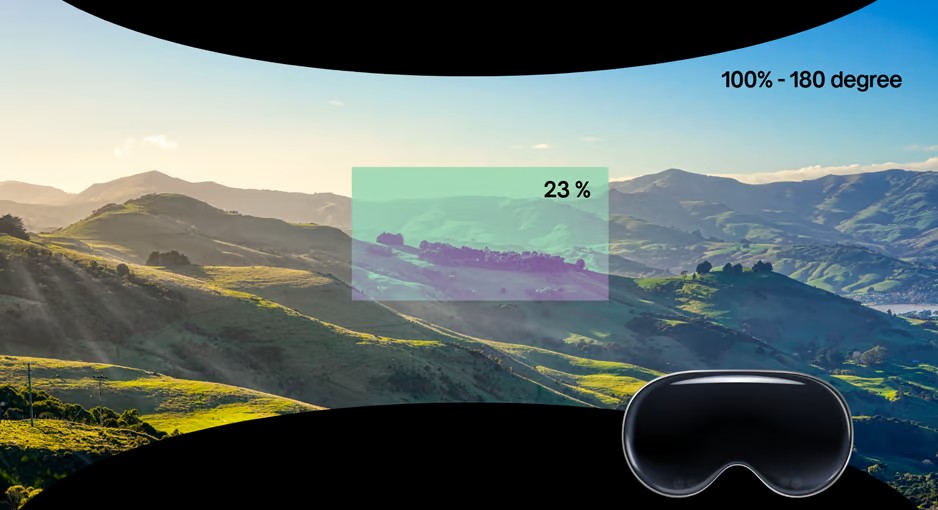Abstract:
Limited radio transmission bandwidth seriously limits the ability to use wide-angle video in technology. This problem is caused by video compression techniques currently being substantially sub-optimal for large field-of-view, leading to video transmission not being fast enough. Our recent research focused on video coding, considering human perception and demonstrated that incorporating vision models into video compression could reduce up to 80% of data without noticeable loss in quality. This more aggressive compression transmits only information visible to humans, similar to the current transmission of audio signals, where only audible frequencies are transmitted.
Our idea aims to create a new technology that will allow drone pilots to have a human vision in 180-degree headsets in real-time. At this stage of technology, drone pilots have only 23% of the potential field-of-view available, limiting their situational awareness, ease of control, and spatial orientation in complex terrain. The outcome of this research will be a novel real-time visualisation technology and a technology platform for optimising video information, allowing artificial systems to be trained for visual understanding.
As part of this idea, new technology will be used to create safe drone piloting conditions for ecosystem restoration and search-rescue operations (which is impossible with aircraft-type unmanned aerial vehicles).
Partners/Collaborators:
Police Waikato
Police Gisborne
Land Search&Rescue New Zealand
National Marine Pacific
Eastland Group (Gisborne Airport)
REEF’D Sportfishing Ltd
LeaderBrand
88 Deco Ltd.
SM Planning
SPS Automation
Lancaster University (UK)
Institute of Radio and Information Systems (Austria)
Stardustme
 Human vision-based technology for real-time processing of wide-angle aerospace video signals
Human vision-based technology for real-time processing of wide-angle aerospace video signals
Dr Anastasia Mozhaeva, Eastern Institute of Technology
Dr Lee Streeter, The University Waikato
Dr Noor Alani, Eastern Institute of Technology
Associate Professor Michael Cree, The University Waikato
Access to the complete annotated dataset is available upon request from AMozhaeva@eit.ac.nz
Limited radio transmission bandwidth seriously limits the ability to use wide-angle video in technology. This problem is caused by video compression techniques currently being substantially sub-optimal for large field-of-view, leading to video transmission not being fast enough. Our recent research focused on video coding, considering human perception and demonstrated that incorporating vision models into video compression could reduce up to 80% of data without noticeable loss in quality. This more aggressive compression transmits only information visible to humans, similar to the current transmission of audio signals, where only audible frequencies are transmitted.
Our idea aims to create a new technology that will allow drone pilots to have a human vision in 180-degree headsets in real-time. At this stage of technology, drone pilots have only 23% of the potential field-of-view available, limiting their situational awareness, ease of control, and spatial orientation in complex terrain. The outcome of this research will be a novel real-time visualisation technology and a technology platform for optimising video information, allowing artificial systems to be trained for visual understanding.
As part of this idea, new technology will be used to create safe drone piloting conditions for ecosystem restoration and search-rescue operations (which is impossible with aircraft-type unmanned aerial vehicles).
Partners/Collaborators:
Police Waikato
Police Gisborne
Land Search&Rescue New Zealand
National Marine Pacific
Eastland Group (Gisborne Airport)
REEF’D Sportfishing Ltd
LeaderBrand
88 Deco Ltd.
SM Planning
SPS Automation
Lancaster University (UK)
Institute of Radio and Information Systems (Austria)
Stardustme

Dr Anastasia Mozhaeva, Eastern Institute of Technology
Dr Lee Streeter, The University Waikato
Dr Noor Alani, Eastern Institute of Technology
Associate Professor Michael Cree, The University Waikato
Access to the complete annotated dataset is available upon request from AMozhaeva@eit.ac.nz